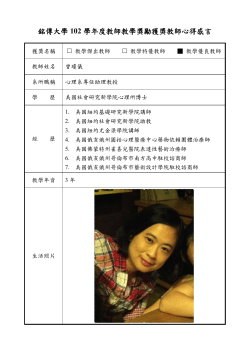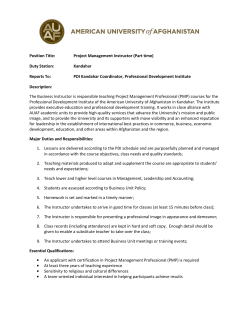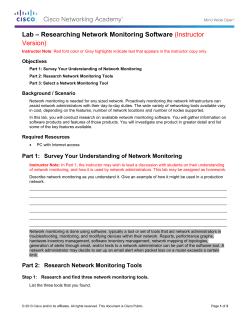
Network Breakdown (Instructor Version)
Network Breakdown (Instructor Version) Instructor Note: Red font color or Gray highlights indicate text that appears in the instructor copy only. Objective Troubleshoot IP connectivity using basic commands. Instructor Note: This activity is best completed by groups of two students – it can then be shared and discussed with another group of students, with the entire class or with the instructor. Scenario You have just moved in to your new office, and your network is very small. After a long weekend of setting up the new network, you discover that it is not working correctly. Some of the devices cannot access each other and some cannot access the router which connects to the ISP. It is your responsibility to troubleshoot and fix the problems. You decide to start with basic commands to identify possible troubleshooting areas. Resources Packet Tracer software Directions Step 1: Create a simple network topology using Packet Tracer software, including: a. Two connected 1941 series routers b. Two Cisco 2960 switches, one switch connected to each router to form two LANs c. Six end-user devices 1) A printer and three PCs or laptops on LAN1 2) Two servers on LAN2 Step 2: Configure the network and user devices and verify that everything is working correctly. Make an error or two in the configurations. Be sure to turn off the Options, Preferences, and the Show Link Lights setting available on the Packet Tracer software. Step 3: Share your saved Packet Tracer file with another group – have them find and fix the problems using the following commands only: ping traceroute telnet show interface show IP interface brief or show IPv6 interface brief show IP route or show IPv6 route show running-config show protocols © 2013 Cisco and/or its affiliates. All rights reserved. This document is Cisco Public. Page 1 of 2 Network Breakdown show vlan Step 4: Share the results of the activity with the class or your instructor. How did the groups fix the problems? Suggested Activity Example Solution: Instructor Notes: All student files, problems, and fixes will vary. Students must be able to show how they used basic troubleshooting commands to identify the network problems. Some possible problems on the network could include misconfigured or missing: Authentication IP addresses and subnet masks (IPv4 or IPv6) – on the network devices or workstations Routing protocols (Layer 2 or 3) Cabling (incorrect cable types or connections) Clock rate placement (DCE) Default or static routes Interface states (down) VLAN setup (names, port assignments, addressing, shutdown, etc.) Please ensure that students have turned off the link-light preference on the Packet Tracer software – that way, they will use the commands stated in this activity to find and correct the network problems. Identify elements of the model that map to IT-related content: Network troubleshooting symptoms commands Troubleshooting procedures © 2013 Cisco and/or its affiliates. All rights reserved. This document is Cisco Public. Page 2 of 2
© Copyright 2025
















